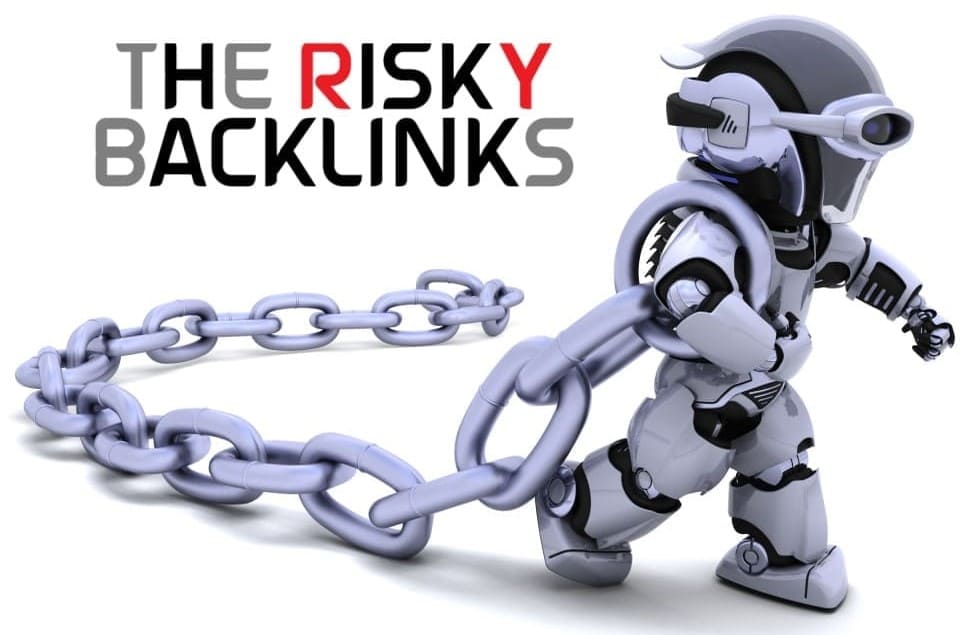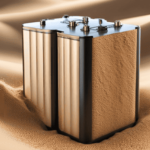
Overview:
Backlinks play a pivotal role in SEO by helping websites improve their search engine rankings and gain greater online visibility. However, a poor backlink risks overall SEO efforts. Essentially, backlinks act as votes of confidence from one website to another in the eyes of search engines like Google. Not all backlinks are created equal; while high-quality backlinks from reputable sites can significantly boost a website’s authority and ranking, low-quality or spammy backlinks can do more harm than good.
The risks associated with poor-quality backlinks include potential penalties from search engines, a drop in search rankings, and damage to your site’s credibility. As a result, it’s crucial for website owners to not only focus on acquiring valuable backlinks but also to actively monitor and manage their backlink profiles. In this article, we will explore why backlinks can be risky and outline a minimal actionable plan to effectively mitigate these risks, ensuring your site remains healthy and reputable in the eyes of search engines.
Contents:
- Understand why Backlinks can be Risky
- Can we Stop Someone from creating Bad Backlinks to our website
- What can be the Minimal Affordable Actionable Plan for mitigating this risk
- Summing Up
So, let’s understand backlink risks through following points:
1. Penalties from Search Engines:
Search engines, especially Google, have strict guidelines for link-building practices. If you engage in manipulative or unethical practices, such as buying links or participating in link schemes, you risk being penalized. This can lead to a significant drop in search rankings or even removal from search results entirely.
Example:
In 2012, Google introduced the Penguin algorithm update, which specifically targeted websites with manipulative backlink profiles. Sites with unnatural link-building practices, like buying links or using link farms, saw their rankings plummet. For instance, Interflora, a major flower delivery company, was penalized by Google and disappeared from search results due to its aggressive link-building campaign involving advertorials with embedded links.
2. Link Farms and Spammy Sites:
Getting backlinks from low-quality or spammy websites, often known as link farms, can harm your website’s credibility and ranking. These links are seen as manipulative and can trigger penalties.
Example:
A business might buy backlinks from a service promising hundreds of links for a low price. These links often come from link farms, which are networks of low-quality, unrelated sites created solely for the purpose of link building. When Google identifies these patterns, the business’s site can be penalized, leading to a significant drop in organic traffic.
3. Irrelevant Links:
Backlinks from websites that are not relevant to your niche or industry can be seen as unnatural by search engines. These irrelevant links can dilute the authority of your website and may lead to penalties.
Example:
A technology blog receiving backlinks from unrelated niches, such as cooking or fashion blogs, can raise suspicion. These irrelevant backlinks do not contribute to the authority of the technology blog in its niche and can be seen as unnatural, potentially harming the blog’s SEO.
4. Sudden Spike in Backlinks:
A sudden, unnatural spike in backlinks can raise red flags with search engines. This can happen if you engage in aggressive link-building strategies or if your site is targeted by negative SEO attacks. Search engines might interpret this as an attempt to manipulate rankings.
Example:
A small e-commerce site suddenly acquires thousands of backlinks in a short period due to a viral campaign or an aggressive link-building strategy. Search engines may flag this sudden spike as suspicious, as it deviates from the normal growth pattern of the site’s backlink profile, possibly leading to an investigation and penalties.
5. Link Rot:
Over time, backlinks can become broken or lead to irrelevant or low-quality content due to changes in the linking sites. This can negatively impact your site’s SEO and user experience.
Example:
A company has accumulated many backlinks over the years, but some of these links now lead to 404 error pages because the linking sites have changed their structure or content. This “link rot” can negatively impact the company’s SEO. Regularly monitoring and updating backlinks can mitigate this risk.
6. Negative SEO:
Competitors or malicious actors might engage in negative SEO tactics, building harmful backlinks to your site to damage your search rankings. These bad links can lead to penalties or a drop in your site’s performance.
Example:
A competitor hires a malicious SEO service to build hundreds of spammy backlinks to your website, hoping to trigger a penalty. If these backlinks are detected by search engines as manipulative, your site’s rankings could suffer. To counter this, it’s essential to regularly audit your backlink profile and use tools like Google’s Disavow Links tool to negate harmful backlinks.
7. Algorithm Updates:
Search engines frequently update their algorithms to better detect and penalize manipulative link-building practices. What is considered acceptable today might be penalized tomorrow, making it difficult to maintain a long-term backlinking strategy.
Example:
A website relies heavily on guest posting with keyword-rich anchor text. An algorithm update then targets sites with over-optimized anchor text in backlinks. As a result, the website’s rankings drop significantly, demonstrating the risk of relying on strategies that may be penalized by future updates.
8. Over-Optimization:
Over-optimization of anchor text in backlinks can lead to penalties. If a large proportion of your backlinks use exact-match anchor text, search engines might see this as an attempt to manipulate rankings.
Example:
A local plumbing business uses “best plumber in New York” as anchor text for most of its backlinks. This exact-match anchor text, if overused, can be flagged by search engines as manipulative. Diversifying anchor text with more natural variations like “plumbing services” or “plumbing company in NY” can help mitigate this risk.
9. Dependency on Backlinks:
Relying too heavily on backlinks for SEO can be risky. Changes in search engine algorithms or a drop in the number or quality of backlinks can significantly impact your search rankings.
Example:
An online retailer focuses almost exclusively on backlink acquisition for SEO, neglecting other factors like content quality, user experience, and technical SEO. When an algorithm update devalues some of their backlinks, the site’s rankings and traffic drop dramatically, highlighting the danger of over-reliance on one SEO tactic.
10. Resource Intensive:
Investing heavily in backlink acquisition without considering the potential risks can lead to wasted resources if those backlinks end up being devalued or result in penalties.
Example:
A startup invests heavily in a link-building campaign, paying for high-quality backlinks from authoritative sites. If these backlinks are later devalued due to an algorithm change or if the sites themselves lose authority, the startup’s investment yields poor returns, and the resources could have been better spent on a more diversified marketing strategy.
Can we stop someone from creating bad backlinks to our own website:
Unfortunately, we can’t directly stop someone from creating backlinks (both good or bad) to our website, as backlinks are essentially hyperlinks that other websites create to link to our site. However, we can manage and mitigate the impact of unwanted or harmful backlinks through several steps:
1. Monitor Backlinks:
We can use tools like Google Search Console, Ahrefs, Moz, or SEMrush to regularly monitor the backlinks to our site. These tools can help us identify new and existing backlinks.
2. Evaluate Backlinks:
Assess the quality of the backlinks. High-quality backlinks from reputable sites can improve our SEO, while low-quality or spammy backlinks can harm our site’s ranking.
3. Disavow Bad Backlinks:
If we find harmful or unwanted backlinks, we can use Google’s Disavow Tool to tell Google to ignore those links when assessing our site. Be cautious with this tool, as disavowing the wrong links can negatively impact our SEO.
4. Contact Webmasters:
We can reach out to the webmasters of the sites with unwanted backlinks and politely ask them to remove the links. This approach may not always be effective, but it’s worth trying.
5. Strengthen our SEO:
We can focus on building high-quality, relevant backlinks and creating valuable content to outweigh the negative impact of any bad backlinks.
6. Legal Action:
In extreme cases where backlinks are part of a malicious attack (e.g., negative SEO campaigns), we may need to consult with a legal expert to explore possible legal actions.
Now, let’s explore a Minimal Affordable Actionable Plan for mitigating this risk:
There are several paid tools available that can help identify and analyze bad backlinks and address them all at once. However, these tools often require a significant investment, which may not be feasible for all website owners. For those who cannot afford these costly options, Google Search Console provides a free alternative for monitoring your website’s backlinks. Here are the steps to use it effectively:
1. Set Up Google Search Console:
- If you haven’t already, sign up for Google Search Console.
- Add your website to Search Console and verify ownership.
2. Access Backlinks Data:
- Log in to your Google Search Console account.
- Select the website property you want to monitor.
3. Navigate to the Links Report:
- In the left-hand sidebar, click on “Links.” This will take you to the Links report, where you can see detailed information about your site’s backlinks.
4. View External Links:
- Under the “External links” section, you can see the top linked pages, the top linking sites, and the top linking text.
- Top linked pages: Shows the pages on your site with the most backlinks.
- Top linking sites: Lists the domains that link to your site the most.
- Top linking text: Displays the anchor text used most frequently in backlinks to your site.
5. Analyze Backlinks:
- Click on the “More” button under each section to view more detailed information.
- You can download the data by clicking the “Export External Links” button at the top right corner of each section. This allows you to analyze the backlinks in a spreadsheet.
6. Evaluate Backlinks:
- Assess the quality and relevance of the backlinks. Look for patterns in the linking sites and anchor text used.
- Identify any low-quality or suspicious links that might negatively impact your site’s SEO.
7. Take Action:
- If you find any harmful backlinks, you can use the Disavow Tool to request Google to ignore these links when calculating your site’s ranking. Create a disavow file with the list of URLs or domains you want to disavow and upload it through the Disavow Tool in Google Search Console.
- Reach out to webmasters of low-quality or spammy sites and request the removal of harmful backlinks.
8. Regular Monitoring:
- Make it a habit to regularly check the Links report in Google Search Console to stay updated on new backlinks and ensure the overall health of your backlink profile.
Summing Up:
Backlinks, while essential for improving SEO and increasing online visibility, can be risky if not properly managed. Low-quality or spammy backlinks can negatively impact your website’s ranking, result in search engine penalties, and damage your site’s credibility. Therefore, it’s crucial for website owners to actively monitor and manage their backlink profiles to mitigate these risks.
To address the risks associated with backlinks, follow a minimal actionable plan. First, use free tools like Google Search Console to regularly track your website’s backlinks. Evaluate the quality and relevance of these backlinks, identifying any harmful or low-quality links. Use Google’s Disavow Tool to request that search engines ignore these harmful backlinks, and reach out to webmasters to request the removal of spammy links. Additionally, focus on building a strong backlink profile by acquiring high-quality, relevant backlinks to enhance your site’s SEO and credibility.
Courtesy Image: FreePik











